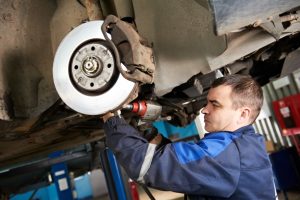It has not been all so good for the steel and iron industry. Well, yes, the industry has had a positive growth rate for decades upon decades. Nonetheless, its contribution to environmental pollution has been so significant that it raises global concerns about its environmental consciousness. However, it is only with a conscious and deliberate outlook that stakeholders in the steel industry can join hands in reducing steel’s contribution to pollution. And that must start with identifying the major pollutants here.
Key steel pollutants: raw materials, products, by-products, and processes
World Steel identifies the emissions that contribute the most to steel-related pollution as being in the form of coarse and fine dust, sulfates and nitrates, dioxins, and volatile organic compounds. Steel production facilities and processes have their fair share in increasing steel’s carbon footprint. These facilities include coke ovens, sinter and steelmaking plants, blast furnaces, scrap yards, hot and cold rolling yards, and slag treatment areas.
Mitigating steel pollution
Typically, pollution prevention and mitigation measures revolve around minimizing the number of pollutants and processes contributing to pollution. For steel, that would include following procedures such as desulfurization of coke and low sulfur raw materials. The use of activated carbon, catalytic conversion, de-dusting equipment, and vapor recovery systems is also highly applicable here.
However, to optimize pollution reduction procedures, manufacturers (and their stakeholders) of all steel products, be they stainless steel strip coils, bars, plates, or tubes, should pursue:
-
Material efficiency
Steel comes in varying grades. Critical characteristics of consideration here include ductility, malleability, extensibility, corrosion resistance, and durability. It requires steel manufacturers thorough research and testing to model assays that will deliver these characteristics in varying degrees depending on the required end product.
Typically, steel grades depend on the composition of the alloying elements. Therefore, manufacturers must insist on using environmentally safe compositions.

-
Advanced manufacturing and installation technology
Steel producers must engage in extensive metallurgical research and engineering to design and implement the most effective ways of manufacturing steel. The design of steel pipes and tubes should also be such that it allows for speedier installation of these products. Besides ensuring quick installation, advanced automated installation equipment will also increase the precision of machine cutting, further reducing the amount of steel that goes to waste.
-
Certification
Over 6% of the CO2 emissions come from the production of iron and its variants, which include steel. Therefore, if global industry standards were to go by, steel should be among the strictest to mitigate climate change. Stakeholders in the steel industry should ensure they operate by ISO standards in their steel production. That should include mining the iron ores to the proper disposal of industrial effluents and steel scrap.
You have a part to play in pollution prevention and mitigation
Understanding the major pollutants from steel products, by-products, and manufacturing process and facilities is the first point of contact in your contribution toward steel against climate change. You will check for industry standards and certification when next you are purchasing stainless steel strip coils. You will consult to know precisely how many steel rods and plates will be enough for your construction project so that none ends up as scrap. You’ll also identify steel product manufacturers and suppliers that commit to using technology and facilities which minimize pollution.
Reducing steel’s contribution to climate change is highly achievable. However, it will take the collective efforts from all stakeholders, including you, to realize that. So, play your part, and be diligent at it.














